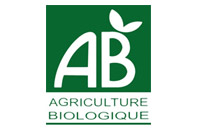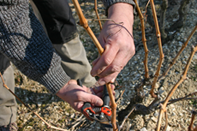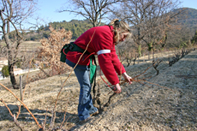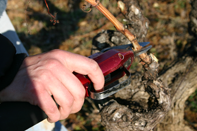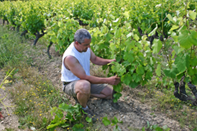Working the land
An old saying goes "One does not extract in the cellar, we extract from the vine". We must respect the soil and vines. This is the reason why we do not use pesticides, chemical fertilisers or hericides. The only products used are traditional copper and sulphur.
To obtain the finest grapes one must be constantly in the vineyards. Pruning in the winter, plowing in the spring and debudding in May to retain only the most beautiful branches and finally cutting back of the leaves or canopy in to provide better ventilation and sunlight. This work will be completed in August with the green harvests that will only leave 6 to 8 grapes) per vine for a better concentration.
During the harvest we search for only the ripest grapes.
The small size of our operation gives us more flexibility and allows us to defer some harvest dates, especially for our most elevated land, in order to ripen the crop. The grapes are then skilfully picked by hand. They are sorted for a first time by harvesters under Sophies watchful eye, then checked a second time by Eric upon arrival at the winery.
The work in the cellar
If the wine making begins with the harvest, don't expect miracles. It all depends on having the perfect grapes. The main purpose of the work in the cellar is to emphasise the berries without altering their potential. This is the reason why we assemble all our grapes from the very beginning of fermentation. In the same spirit, the transformation of sugar into alcohol is only made with indigenous yeasts which are already naturally present, not to mention the daily pumping of oxygen which is necessary for the yeast to do its work.
We allow our wines to mature partly in concrete tanks to preserve fruit and freshness and partly in a half hogsheads of French oak to round out the tannins. After fourteen months of ageing, our wines are bottled in respect of the vintage without fining or filtration. The bottles are then stored in a climate controlled environment before they are dispatched.
Map of vineyard in Gigondas (pdf)
